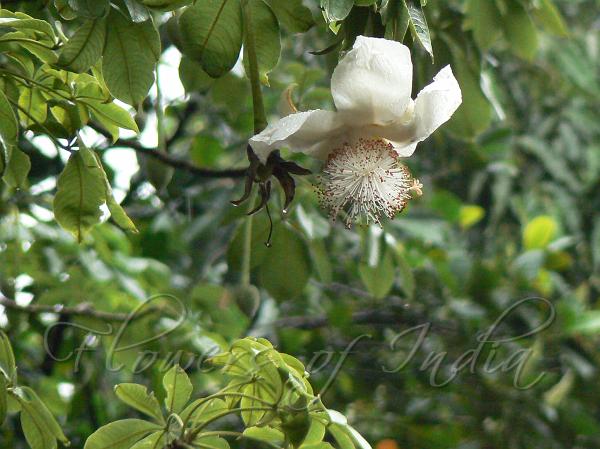|
| Baobab |
|

|

| File size | 1484153 |
| Original date | 6/20/07 7:42 AM |
| Resolution | 2816 x 2112 |
| Flash | Flash did not fire, auto |
| Focal length | 72.0mm |
| Exposure time | 1/125s |
| Aperture | 4.5 |
| Focus Distance | |
| Metering Mode | Multi-segment |
| Camera make | Panasonic |
| Camera model | DMC-FZ7 |
| Sensor type | OneChipColorArea |
|
|
|
Photo: |
Botanical name: Adansonia digitata Family: Malvaceae (Mallow family)
The baobab has been known in India for many centuries. Muslim traders are
credited with their introduction and dispersal in our country from tropical
Africa. Native to Africa, the baobab is one of the most amazing trees.
The tree is not very tall, growing up to 70 ft,
but the trunk is massive, as much as 35 ft in diameter
and shaped like a bottle. The trunk is in fact used to store water during dry
periods. There are cases of people using the hollow trunks of living trees as
houses. The palmately compound leaves are clustered at the ends
of short, stocky branches. Baobab is a deciduous tree, losing its leaves in
the dry season. The Arabian legend of the baobab is that "the devil plucked up
the baobab, thrust its branches into the earth and left its roots in the air".
This aptly describes the shape of a leafless baobab.
At the end of the dry season, the baobab blooms with large
white flowers that hang down on long stalks. The flowers are 4-5 in across and have waxy crinkled petals about 4 in long that
surround dense clusters of purplish stamens that look like powder puffs. The
flowers open only at night and are pollinated by bats feeding on the nectar.
The pendant fruits are velvet covered, gray and gourdlike, about a foot long,
and apparently look like dead rats hanging from the tree by their tails.
| Identification credit: Dinesh Valke | Photographed in Maharashtra. |
• Is this flower misidentified? If yes,